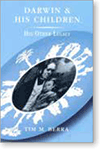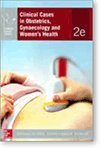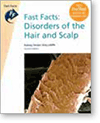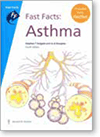Darwin & His Children: His Other Legacy
Tim M Berra
New York: Oxford University Press, 2013
ISBN 978 0199 309 443, $29.95
 There are many books on Charles Darwin – his life, his theory, his influence, and even three books on his illness. In most of these books his children are mentioned only as a background to their father but in this book, Darwin’s children are the focus.
There are many books on Charles Darwin – his life, his theory, his influence, and even three books on his illness. In most of these books his children are mentioned only as a background to their father but in this book, Darwin’s children are the focus.
Darwin opposed all forms of contraception. His own 10 children were evidence of the sincerity of this belief. Of these 10 children, three died in childhood; one, born prematurely, died in the first month of life, one died aged 10 years, probably from miliary tuberculosis, and the last, born when Emma was 48 years, had features of Down syndrome, identifiable in his one photograph. He died in his second year of life after contracting scarlet fever.
The surviving children, like their father, had strange illnesses. Henrietta was sickly as a child and her sickness worsened after she had diphtheria. She did, however, improve and lived until she was 84 years.
George, like his sister spent time in bed or having treatment in spas. Bessy had difficulty with words and had odd facial and finger movements. Frank and Leonard suffered with childhood illnesses, scarlet fever in particular. Horace, the youngest surviving child, developed strange shuddering and gasping attacks as a young boy.
Darwin worried that his children had inherited his own distressing ailment. However, Darwin’s chronic invalidism must have influenced his children and their attitudes to sickness, particularly his daughter Henrietta, who spent much time in bed. Her illness would seem to have all the criteria of the somatoform disorder, even to having a close relative (her father) as role model.
These childhood illnesses were mostly overcome and those who survived childhood had long, productive lives. The eldest, William, was the only robust child. He became a successful banker and financier.
The picture that the book presents is of that of a functional, relaxed family that held together despite illnesses and despite the controversies that followed Darwin’s publications. The book brings together much information not previously accessible; it shows Darwin, as well as all his other characteristics, to be a loving, concerned parent with talented children. It is a welcome addition to the considerable literature that relates to Darwin himself, his work and his contemporaries.
Dr John Hayman
Kew, VIC
Clinical Cases in Obstetrics, Gynaecology and Women’s Health 2e
Caroline De Costa, Stephen Robson, Boon Lim
Australia: McGraw Hill Education, 2013
ISBN 978 1743 077 221
 Obstetrics, gynaecology and women’s health are all unique but related fields of medicine. The authors of this edition present 50 common and important cases of women’s health across the spectrum from menarche to the older years, including pregnancy care. There is a broad mix of primary care as well as secondary and tertiary care presentations.
Obstetrics, gynaecology and women’s health are all unique but related fields of medicine. The authors of this edition present 50 common and important cases of women’s health across the spectrum from menarche to the older years, including pregnancy care. There is a broad mix of primary care as well as secondary and tertiary care presentations.
This book is aimed at medical students, junior doctors and general practitioners. However, I believe it is highly valuable for nurses and midwives working in the field of women’s health. With the rising number of practice nurses undertaking well women’s checks and Pap smears, this resource has greater scope than intended.
Each clinical case follows a presentation format similar to problem-based learning. Some basic background about the client is presented, such as age and parity, then the presenting symptoms are described. A variety of probes is then provided for the reader to consider in relation to history taking, examination, investigations and management. There are many text boxes throughout that highlight key clinical concerns, background information about diagnoses as well as brief responses that may be anticipated from the woman herself. Each case concludes with clinical comments, clinical pearls and references.
The strengths of this publication are its accessibility to the reader, and concise and focused discussions. This edition seems to be up to date with current Australian clinical practice guidelines and therapies. However, there is a disclaimer alerting the reader to be mindful of our ever-changing evidence base and frequent changes in treatment and drug therapies. As a learning resource, this book offers a sound problem solving approach to clinical practice for the novice professional faced with obstetrics, gynaecology and women’s health issues.
The limitation of this publication is its directive approach to the cases. While written from a problem-based learning perspective, the answers to each case are provided and it would be possible for the reader to follow the steps superficially rather than learning the clinical reasoning behind each. As a teaching tool, each case could be presented in true problem-based style seeking learner responses and problems solving before releasing new information. As a women’s health practitioner, I prefer the use of the term woman/client rather than patient, especially in primary care. On a final note, I would never ask a woman to put her fists under her buttocks during a speculum examination (page 7) as this puts a woman in a very vulnerable position. The same effect can be achieved with a rolled towel or cushion, leaving the women’s hands free for comfort and control.
Dr Linda Sweet
Adelaide, SA
Fast Facts: Disorders of the Hair and Scalp (Second Edition)
Rodney Sinclair, Vicky Jolliffe
Australia: Health Press Limited
ISBN: 978 1 908541 37 6, $25.00
 Hair disorders are very frequent in our daily practice and are associated with negative repercussions on the patient’s self-esteem and confidence. It can cause psychological and emotional stress, sometimes leading to depression and isolation of the patient. Hair loss affects people of all ages and can be caused by a variety of factors. In order to effectively diagnose and treat a wide range of hair conditions it is important to have good knowledge of the mechanisms involved, clinical features and treatment of the pathology.
Hair disorders are very frequent in our daily practice and are associated with negative repercussions on the patient’s self-esteem and confidence. It can cause psychological and emotional stress, sometimes leading to depression and isolation of the patient. Hair loss affects people of all ages and can be caused by a variety of factors. In order to effectively diagnose and treat a wide range of hair conditions it is important to have good knowledge of the mechanisms involved, clinical features and treatment of the pathology.
The second edition of Fast Facts: Disorders of the Hair and Scalp, by Rodney Sinclair and Vicky Jolliffe, provides a comprehensive easy-to-read guide to the most important disorders of hair and scalp. The authors give an overview of the anatomy and physiology of the hair, explaining the normal hair cycle and all factors influencing the hair cycle. To establish a diagnosis, a clinical approach to the patient presenting with hair loss is explained: detailed history, observational examination and investigation (hair pull test, tug test, dermatoscopy, histology).
The book features a practical clinical reference across the most important hair pathologies, such as Androgenetic alopecia; diffuse hair loss – telogen effluvium; alopecia areata; trichotillosis and traction alopecia; scarring alopecia; tinea capitis; hirsutism and hypertrichosis; scalp disorders; special problems in children; hair transplantation, care and cosmetics. In each chapter, there is a consistent format referring to pathophysiology, clinical manifestations, physical exam, diagnosis, and different options of treatment. The book includes covered several tables, illustrations, full colour photographs and key points of each disease category. It also includes online access to a FastTest, to ensure that the reader has learned the key points. There are questions for every chapter with the correct answers and page references for further reading.
The book gives clear, well-written and concise information about hair and scalp disorders. This is of great value for general practitioners, dermatologists or anyone who wants to stay up to date with knowledge, management and treatment options on hair diagnosis.
Dr Rubina Alves
Specialist in Dermatology and Venereology
Funchal, Portugal
Fast Facts: Asthma
Stephen T Holgate, Jo A Douglass
Health Press, Oxford, 4th edition, 2013
 This small book in its latest edition provides a clear and easy-to-read update on all aspects of the subject of asthma. The text is easy to read and follows a logical progression beginning with the pathophysiology, which is clearly and simply explained, then progressing through, in a logical manner, to the clinical aspects and then addressing the current concepts of asthma treatment, including the management of acute attacks. The book underscores the principal target of asthma management, that is, the symptomless patient leading a normal life and using the least amount of treatment to achieve that state. While this is not always achievable, good advice is given on managing those with ongoing or recurrent complaints. The discussion of the underlying features and management of refractory asthma is of particular interest to all those medical practitioners who see this particular group.
This small book in its latest edition provides a clear and easy-to-read update on all aspects of the subject of asthma. The text is easy to read and follows a logical progression beginning with the pathophysiology, which is clearly and simply explained, then progressing through, in a logical manner, to the clinical aspects and then addressing the current concepts of asthma treatment, including the management of acute attacks. The book underscores the principal target of asthma management, that is, the symptomless patient leading a normal life and using the least amount of treatment to achieve that state. While this is not always achievable, good advice is given on managing those with ongoing or recurrent complaints. The discussion of the underlying features and management of refractory asthma is of particular interest to all those medical practitioners who see this particular group.
The various sections are colour coded for easy navigation and the illustrations, tables and algorithms are clear and easy to follow. Each section concludes with a ‘Key points’ and ‘Key references’ listing, which provide a useful summary of the key messages of the section. The book concludes with a listing of ‘Useful Resources’ and a short question ‘Fast Test’ – just to check you took it all in!
I enjoyed reviewing the book and strongly recommend it as a useful resource and educational tool. It provides a quick, easy and up-to-date reference and as such warrants a place on the bookshelf of all those of us who manage asthma on a regular basis.
Jonathan Burdon MBBS
MD, FRACP, FCCP